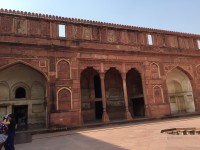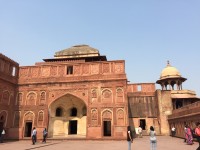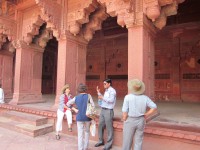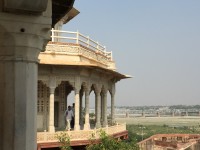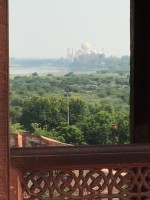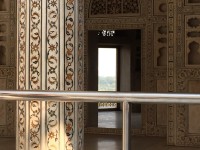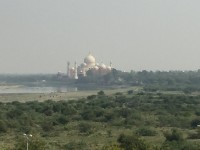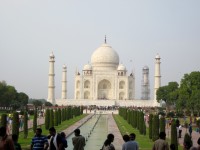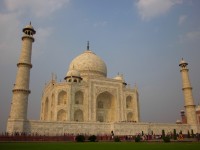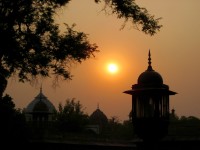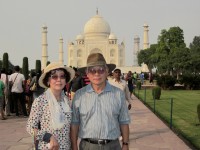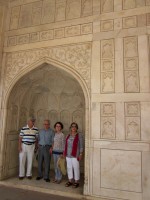Days Eleven and Twelve: White Taj and Red Fort
Prior to seeing Taj Mahal for the first time, I had imagined it from seeing it in photographs. When I finally looked it in three dimensions the monument was more magnificent than how I had imagined! Yet, this time, my fourth, it looked more spectacular from far and more impressive in details.
Taj Mahal means ‘crown of palaces’ and is located on the bank of the Yamuna River in the city of Agra.
When I visit Taj Mahal I also visit Agra Fort. About two miles northeast of Taj, the Fort is an equally powerful architectural marvel. While the former was built by Shah Jahan (1592-1666) latter was built by his grandfather Emperor Akbar (1542-1605).
Shah Jahan’s reign is considered the golden period of Mughal architecture. However, many of the structure made during Akbar’s reign are equally magnificent. Akbar’s favorite building material was red sandstone and Shah Jahan’s was white marble. The inner core of Red Fort was constructed with bricks and external surfaces with red sandstone. Taj Mahal was constructed with translucent white marble from Makrana in Rajasthan, jasper from Punjab, and jade and crystal from China.
Shah Jahan built the Taj as a mausoleum for his beloved wife, Mumtaz Mahal (1593-1631) who died giving birth to their fourteenth child.
